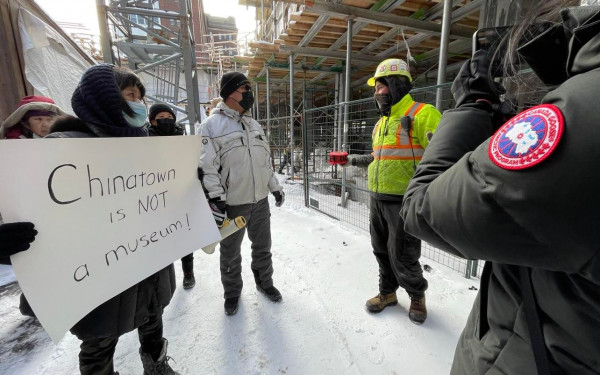Editorial
Steps After the Summit
It was a bona fide media event.
The “national discussion” was promised by Premier Pauline Marois before she was even sworn in last September. Relations between once-unified student associations were strained as their conditions for attendance diverged.
Outside the Griffintown art gallery, thousands marched in an illegal demonstration that ended with clashes with riot police and the Sûreté du Québec. The event even fought for airtime with the drama of the Charbonneau Commission.
For a moment, a month before the spring equinox, it almost seemed like we were almost slipping into another printemps érable.
So what are we left with after this two-day blitz of talking points?
Looking at tuition, there wasn’t much of a surprise.
The Parti Québécois used the summit to announce their unilateral decision to index tuition, ending a freeze that has been in place for most of the time since the Quiet Revolution.
Despite her early support for the carré rouge movement, anyone paying attention to Marois’s campaign last fall won’t take this as a shock.
Maybe it was inevitable, given the huge gulf between the student associations’ and university administrators’ positions on the issue—both parties staring at her as she made the announcement.
What’s more disappointing is how the government has marketed its indexation plan.
The government and the major media have repeatedly emphasized that university tuition costs will increase by about three per cent, or $70, annually—but that’s not entirely accurate.
It might be true for this fall, but with tuition tied to growth in average household income, there’s no guarantee that rate won’t change.
A widening gap between the rich and poor can increase average income on the whole, disproportionately raising tuition for lower-income families in the process.
If indexation is the government’s solution, they’re going about it the wrong way. How much households make isn’t a good statistic to tie tuition increases to in a province where students are often pay their own way through school without help from their parents.
But though it served as a platform to voice what the PQ had planned all along, the summit wasn’t entirely fruitless.
Five working groups will be created to examine topics including university governance, accountability, academic offerings and funding, with their findings to be reported to the government in the coming months.
It’s encouraging to see that the student associations will have a role to play in these working groups. When student representation has been reduced on our own Board of Governors at Concordia, it’s refreshing to hear we’ll have input in these discussions at the provincial level.
One of the working groups will explore different organizational structures for the government’s proposed National Council on Universities.
At present, Quebec universities are spending large sums of money building new campuses without adequately consulting stakeholders or coordinating their expansion plans with one another.
If this council is actually given some teeth, it could help to rectify that problem. Perhaps a council on universities will provide a forum in which a single, cohesive vision for higher education in the province can be formulated.
The government’s decision to inject $25 million per year for five years into financial aid can also be seen as a relative win for students. The working group looking into financial aid will also be presided over by Pier-André Bouchard St-Amand, president of the Fédération étudiante universitaire du Québec during the student strike of 2005.
The Quebec government has already been touting the summit as a success in advertisements placed in several dailies. Unlike the last time such a summit was planned, this one actually finished as planned. For that, we suppose, the PQ can call it a success—although higher education in Quebec remains rife with uncertainty.
While the FEUQ has already stated it doesn’t intend to go back to the streets, the next move for more radical groups remains to be seen. There’s also no guarantee, for all the talk about governance and accountability at the summit, that real reform will actually come of these working groups.
As it stands, universities including Concordia are still arguing that they’re underfunded. Their operating grant amounts are, for the moment, nebulous at best. Our part-time faculty has a strike mandate and our full-time professors are currently voting on one as well, citing no progress at the negotiation table.
With money tight, and the provincial government in danger of falling if they veer too far either way, much remains to be seen—even if, as the government puts it, the “crisis” is over.
The PQ needs to make good on its intentions for this summit to be remembered as anything more than a publicity stunt.

(WEB)_799_524_90.jpeg)
_600_832_s.png)

_600_375_90_s_c1.jpg)
1_600_375_90_s_c1.jpg)
_600_375_s_c1.png)
